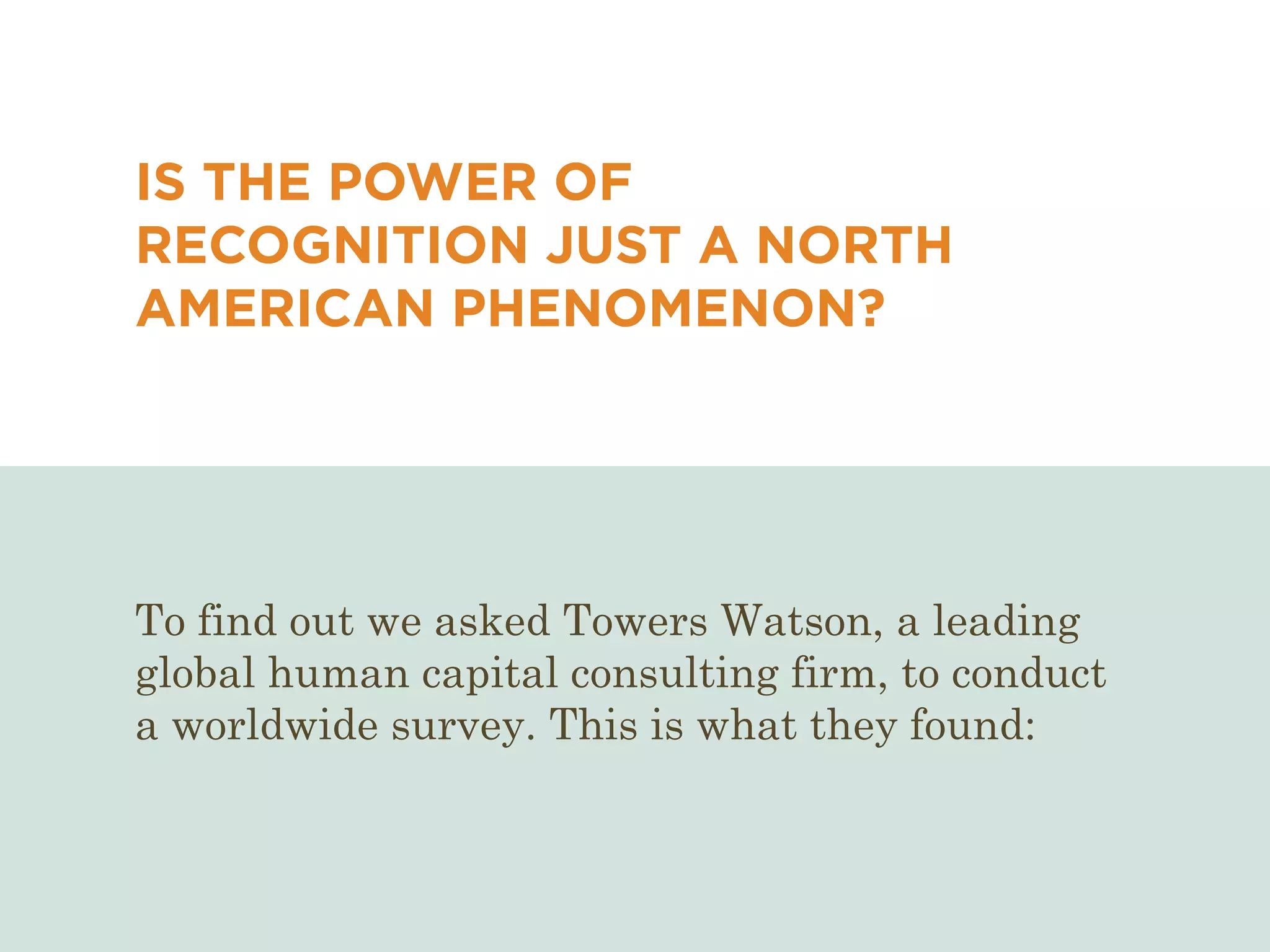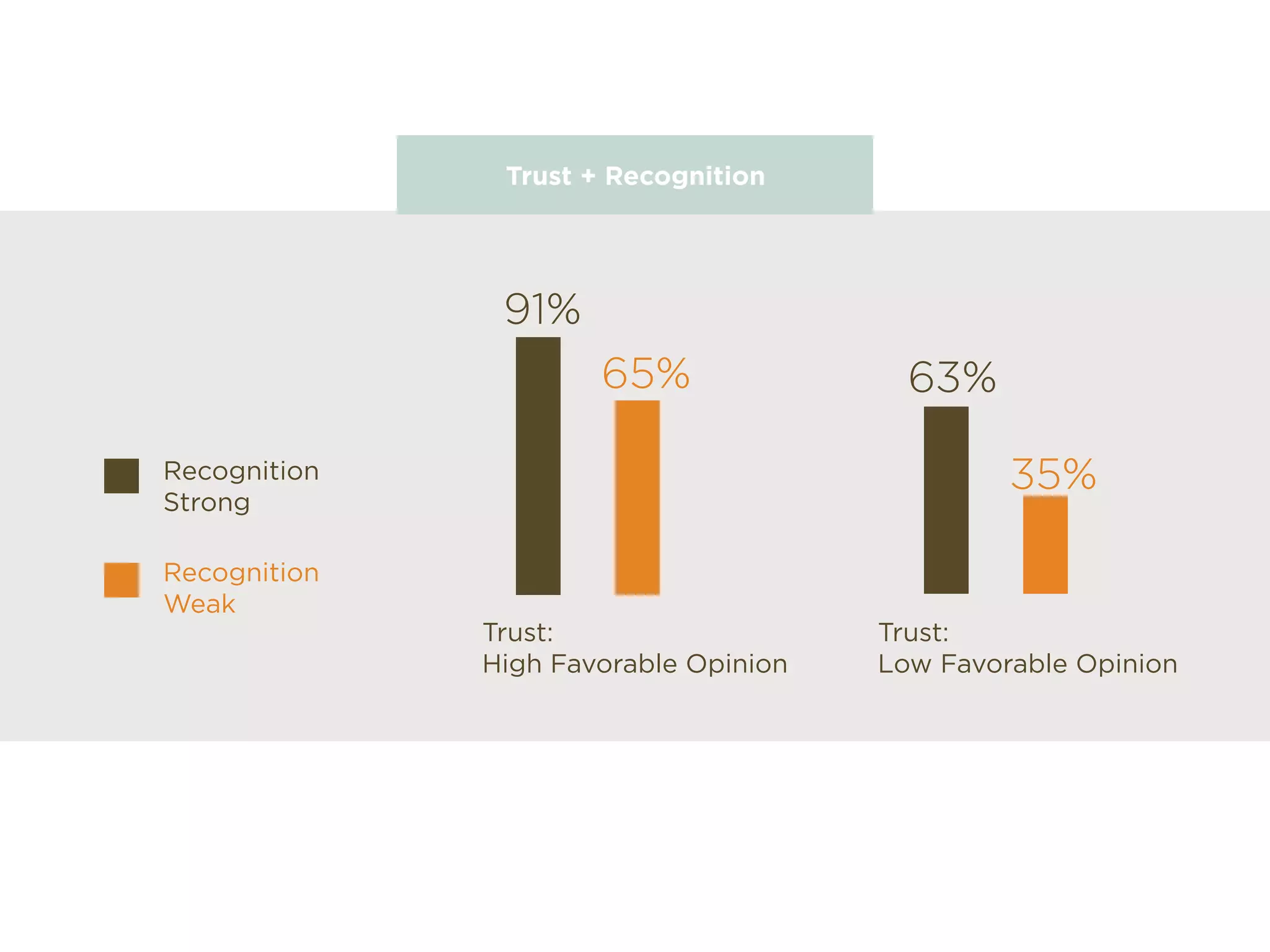1) Recognition has been proven to significantly increase employee performance, engagement, and retention according to a 10-year study of over 200,000 employees.
2) Companies that effectively recognize excellence enjoy returns that are 3 times higher than companies that do not recognize employees. They have higher operating margins, returns on equity, and returns on assets.
3) Even during a period with no pay raises or bonuses, recognizing employees led to a 15% increase in revenue and employee satisfaction at Walt Disney World.


























